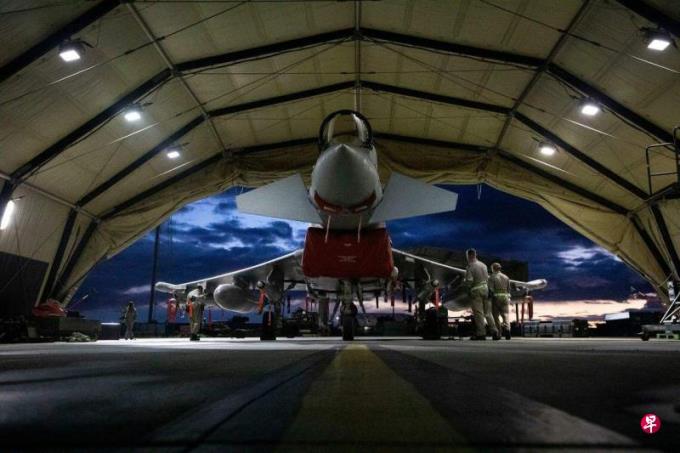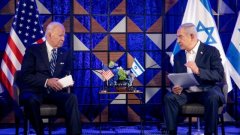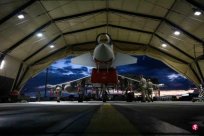
The latest report by the Institute of International Peace, Stockhol, Sweden shows that in 2023, global military expenditure expenditure reached 2.4 trillion US dollars (about 3.2 trillion yuan), a record high.This amount increased by 6.8%over 2022, the largest annual increase since 2009.The research report pointed out that this reflects the deterioration and safety of peace and security around the world, and the situation in the world has improved.
The five countries with the most military expenditures are the United States, China, Russia, India, and Saudi Arabia, ranking the same as in 2022.In 2023, the US military expenditure expenditure increased by 2.3%to 916 billion US dollars, accounting for 40%of the global total military expenditure; China increased its military expenses for the 29th consecutive year, an increase of 6%to 296 billion US dollars; Russia's military expenses increased by 24%It reached 109 billion US dollars; India's military expenditure increased by 4.2%to 83.6 billion yuan; Saudi Arabia's military expenses increased by 4.3%to $ 75.8 billion.
The momentum of rising military expenditures around the world has not diminished, and it may become more and more intense.Since the start of the Russian and Ukraine War on February 24, 2022, there is no trace of peace dawn.Although both parties have stated that they want to stop fire, Russia insists that Ukraine must accept the reality of the battlefield to have room for discussion, and Ukraine shows that the soil is not allowed. Only Russia has to talk about the land occupied by Russia.
In 2023, Ukraine's military expenses increased by 51%to $ 64.8 billion.During the same period, it received $ 35 billion in military assistance, most of which came from the United States.The total of the two is equivalent to more than 90%of Russian military expenditure expenses.The U.S. House of Representatives and Senate just approved US $ 6.10 billion to assist Ukraine, most of which are military aid.
The Russian and Ukraine War activated the North Atlantic Convention of the United States and Europe.NATO requires that member states have allocated 2%of the domestic GDP for national defense expenses, but they enjoy peaceful dividends worldwide during the Cold War, and most European countries have reduced national defense expenses.Last year, of the 31 member states in NATO, only the military spending of only 11 countries reached 2%of the target.
However, the risk of Russia -Ukraine's war and overflowing has increasingly triggers uneasiness in European countries.Last year, Poland's military expenditure accounted for 3.9%of the GDP, far exceeding NATO's goals.Recently, British Prime Minister Sonak promised that by 2030, British defense expenditure budget will increase from current 2.07%to 2.5%.According to reports, Sunak will ask all member states to increase national defense expenses to 2.5%at the summit of the 75th anniversary of the NATO celebration in July this year.
In the Middle East, Hamas launched a terrorist attack on Israel on October 7 last year, provoking old hate and new hatred.Last year, the military expenditure of the Middle East country was estimated to be US $ 200 billion, an annual increase of 9%, the highest increase in 10 years.This reflects the geopolitical situation that has turned sharply.There is no signs of the Harbin War, and there is a risk of overflowing.This means that the arms competition in the Middle East may increase.
In this area, the Taiwan Strait and the South China Sea are resurrected.The Stockholm Institute of International Peace pointed out that Beijing has strengthened its tensions and the tensions of the Asia -Pacific region, which prompted more military expenses in neighboring countries and regions in mainland China.In 2023, Japan's military expenditure expenditure reached $ 50.2 billion, and Taiwan was 16.6 billion US dollars, a 11%increase.
The 2023 defense white paper released by Japan pointed out that China is rapidly strengthening military forces, "the biggest strategic challenge to international order constitutes the biggest strategic challenge", and it is recommended to greatly increase national defense expenses.Australia announced in the recently announced national defense strategy that it will increase national defense expenditure from 2%of the current GDP to 2.4%in the next 10 years, equivalent to $ 50.3 billion (about S $ 44.5 billion), "The possibility of responding to the Pacific conflict broke out in China and the United States.
A variety of countries in the world have greatly improved military spending. By strengthening the deterrent power to fight for security, it reflects the turbulent international situation and the international environment of mutual trust deficit.It ended the peace dividend in the Cold War era.The arms competition and agent war between the great powers set up a global dangerous environment, forcing other countries to greatly increase the military expenditure budget and exacerbate the contradiction of resource allocation.Taking the United Kingdom as an example, it plans to reduce up to 7,200 civil servants' positions to pay higher military expenditure budgets.
The global arms competition is in the ascendant, which also means that the earth will be under greater pressure.A study pointed out that the army is one of the largest consumers of fossil fuel, and carbon emissions account for 5.5%of the global total.In comparison, carbon emissions of global civil aviation aircraft are about 2%.Another study estimates that in the first 12 months of the Russian and Ukraine War, greenhouse gas emissions increased by 120 million tons, which is equivalent to the total annual emissions of Singapore, Switzerland and Syria.
In the international environment in crisis, global military expenditures may reach a new high and exacerbate military reserve competitions, which will further make the international environment more unstable.To stop this vicious circle, it is necessary to effectively govern and have visionary leaders, resolve disputes through diplomatic channels, and avoid use force.




